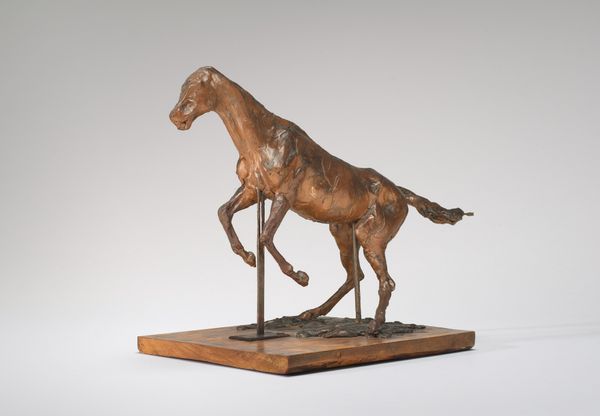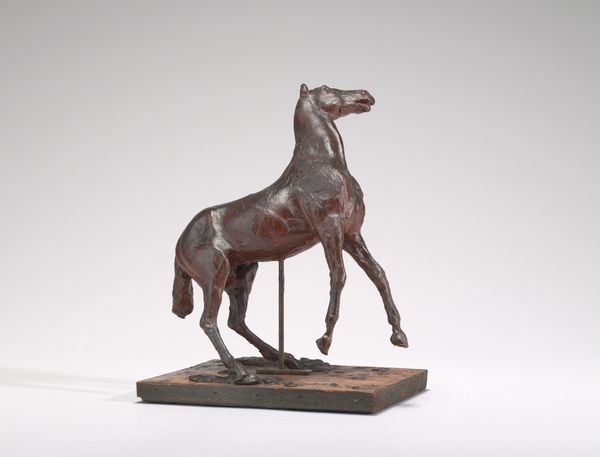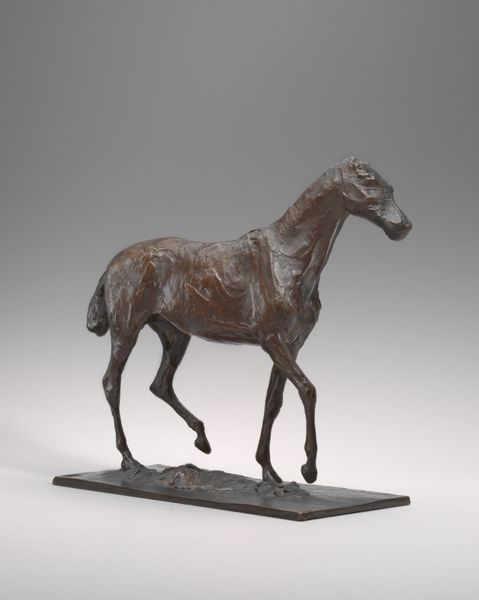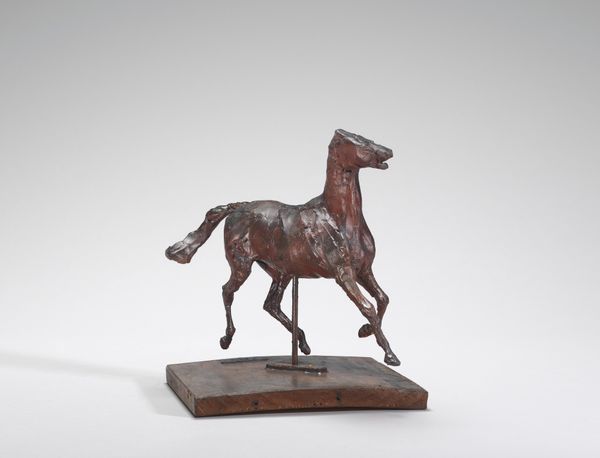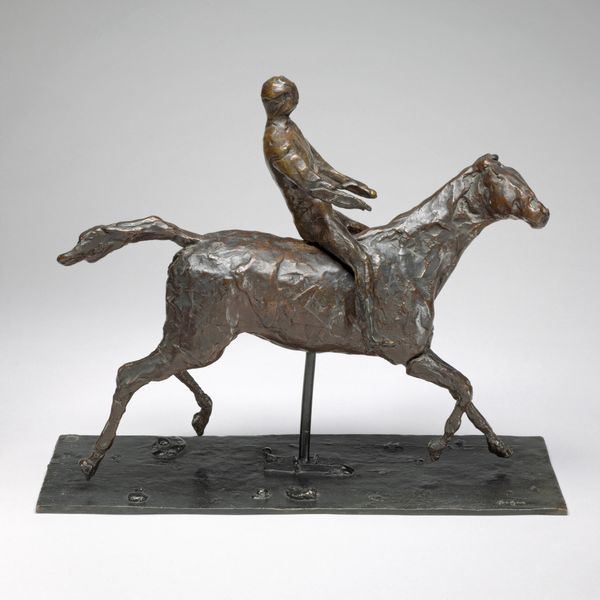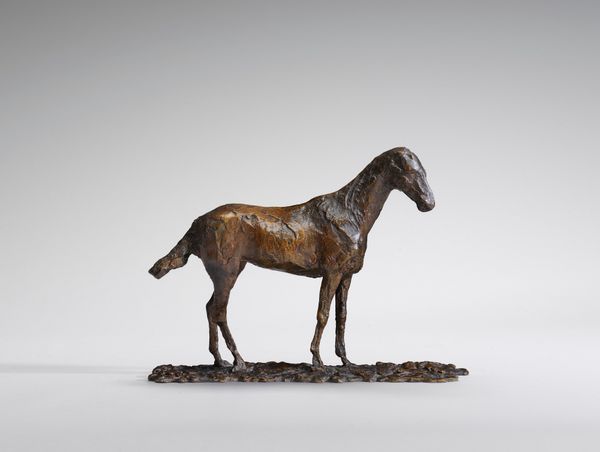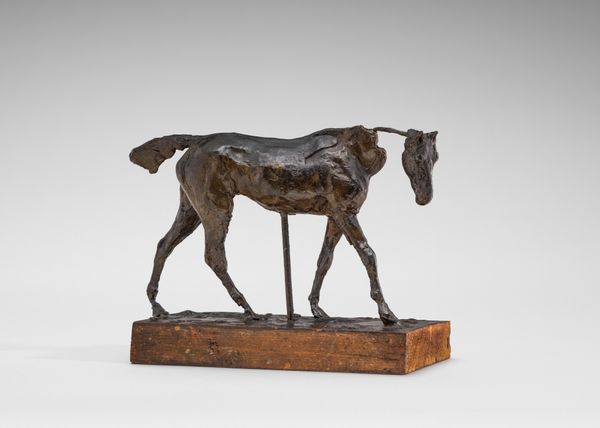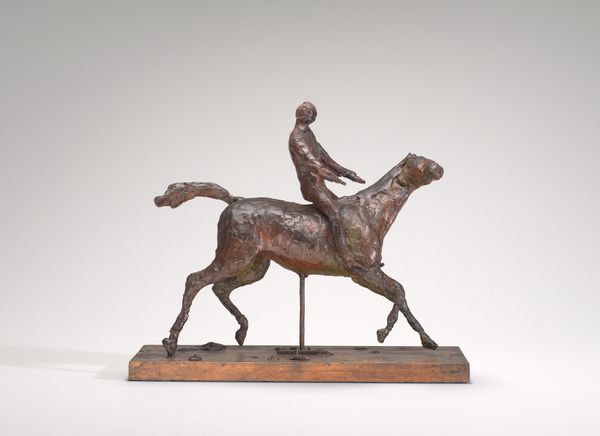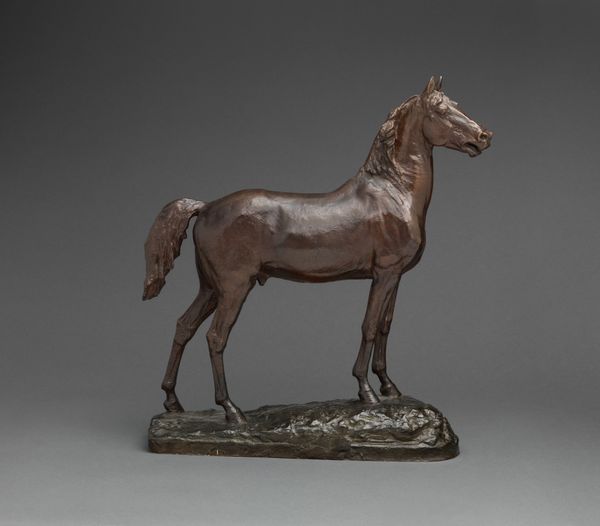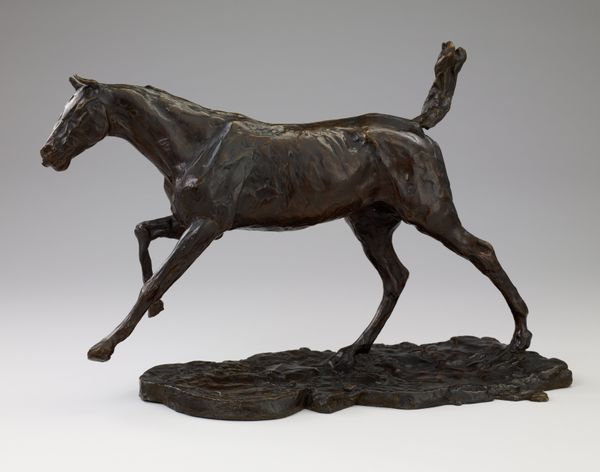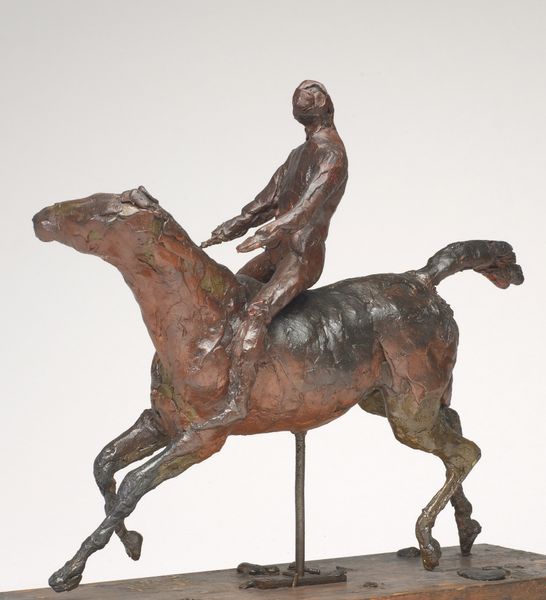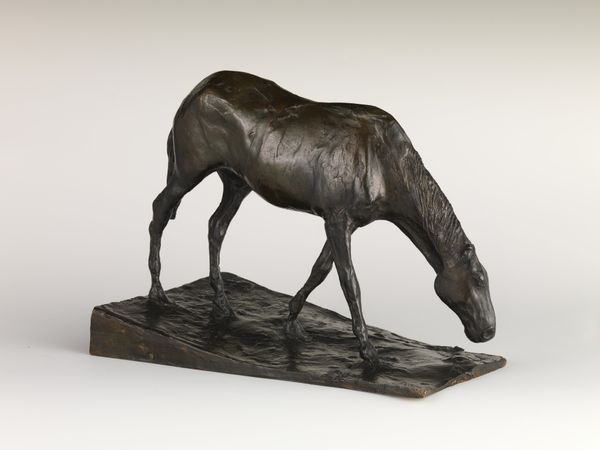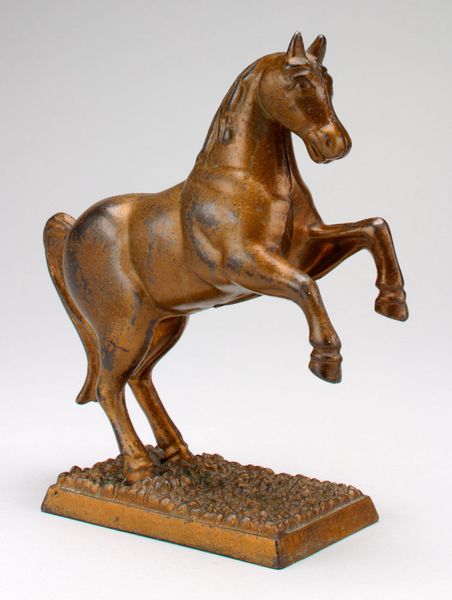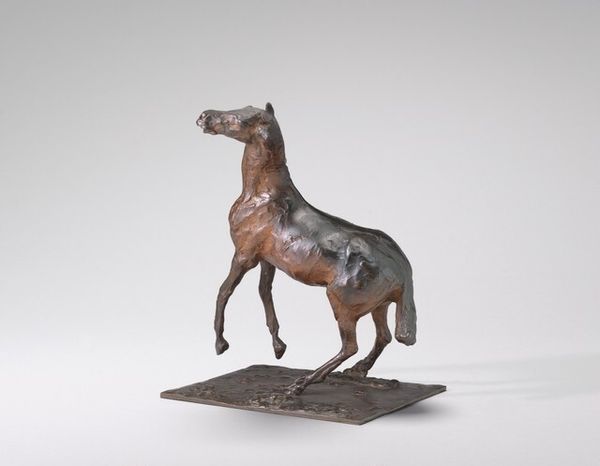
bronze, sculpture
#
impressionism
#
sculpture
#
bronze
#
figuration
#
sculpture
Dimensions: overall without base: 21.6 x 8.7 x 27 cm (8 1/2 x 3 7/16 x 10 5/8 in.)
Copyright: National Gallery of Art: CC0 1.0
This sculpture, titled "Horse Walking," was crafted by Edgar Degas, likely in the late 19th or early 20th century, using wax and other materials. Degas’ choice of wax is interesting, as this would typically be used for preparatory models rather than finished artworks. It allowed him to rapidly capture the animal’s anatomy and gait; you can see the marks of his fingers all over the surface. It is a relatively low-cost material and its capacity for capturing detail makes it ideal for modeling. While Degas was associated with the high-art world of Impressionist painting, he was clearly willing to engage with more process-based, hands-on approaches to making. It’s almost as if he wanted to get closer to his subject, to feel the horse's movement through the act of modeling. The rawness of the wax brings us closer to Degas's artistic process, and makes us consider the relationship between fine art and craft.
Comments
No comments
Be the first to comment and join the conversation on the ultimate creative platform.
